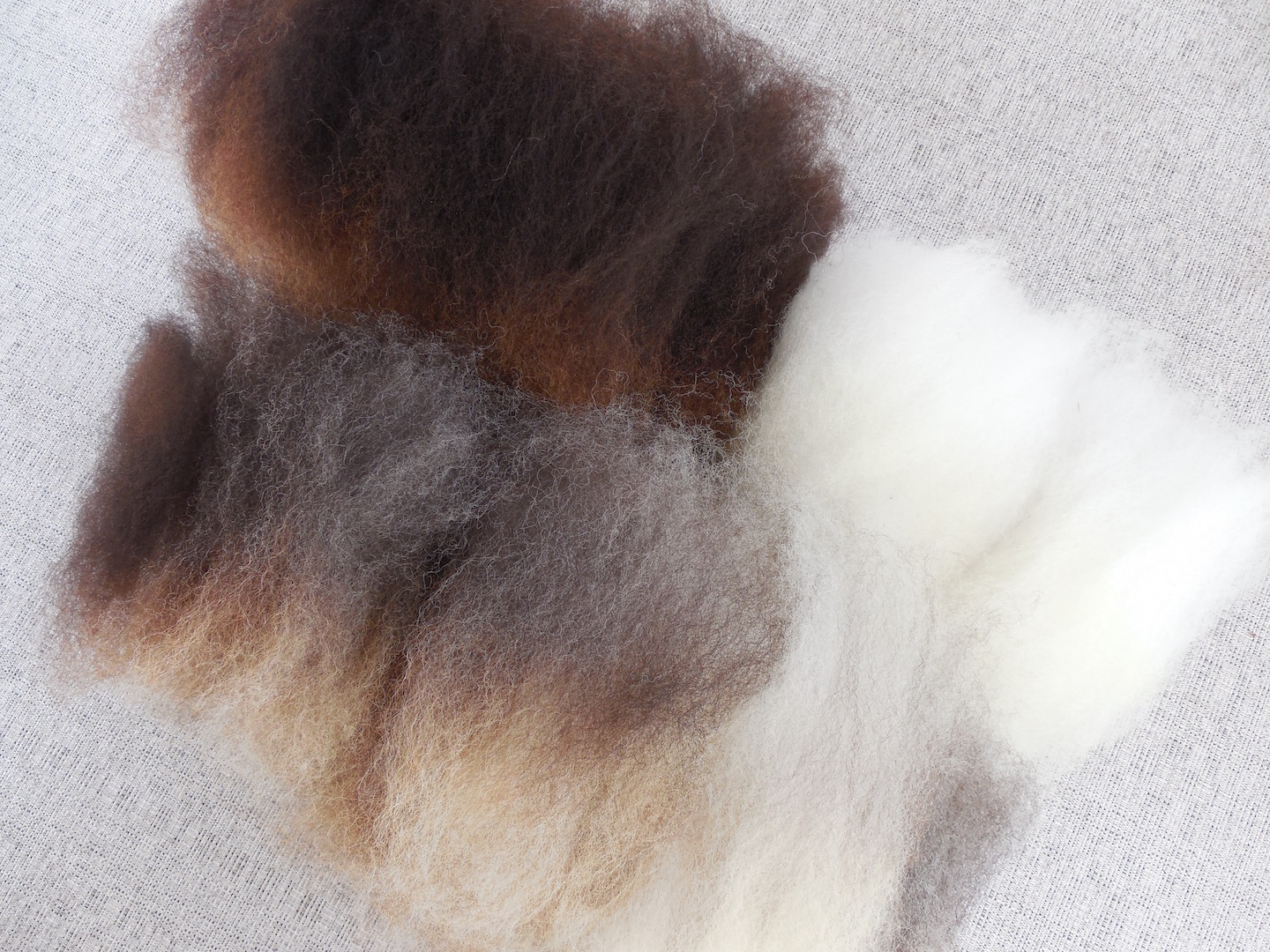Last I wrote, Jacob is great, but didn’t thrill me. I implied the ol’ “it’s not you, it’s me” excuse to not explain anything. Even as I wrote it, I kept asking my self “but, why?”. Why do I feel like this? What’s not to be thrilled about? By all standards of measure, it’s a great fleece. What do I not like about this fleece and maybe Jacob in general? I can’t just go around thinking I dislike a breed without recognizing the reasons why.
I’m fairly new at hand processing wool – about 2 1/2 years of experience. In the world of wool and spinning is not a long time. Especially now, I feel like it’s important to sort out my thoughts about each fleece I process. Sorting out the more technical aspects is pretty easy. Using guidelines of the breed to assess what your working with really gives you an opportunity to learn the breed. Whether your fleece meets all the standard criteria or not, working raw fleece to yarn gives great insight into that breeds wool characteristics.
“Too medium” just keeps running through my head. But really, all that means is I need to put more thought into this. I need to discover just what too medium means. As of my last blog entry, I had only spun a very small sample of this Jacob fleece. It had been right after washing, before I flicked nearly the entire fleece. So often, from even a small sample spin, I get that “ok, I see what this wool is all about”. I really get to the heart of the characteristics – the length, the crimp, the softness or coarseness, the loftiness or silkiness – the combination of characteristics that make the wool special in it’s own right. This fleece did not want to reveal itself right away. Oh the mystery…
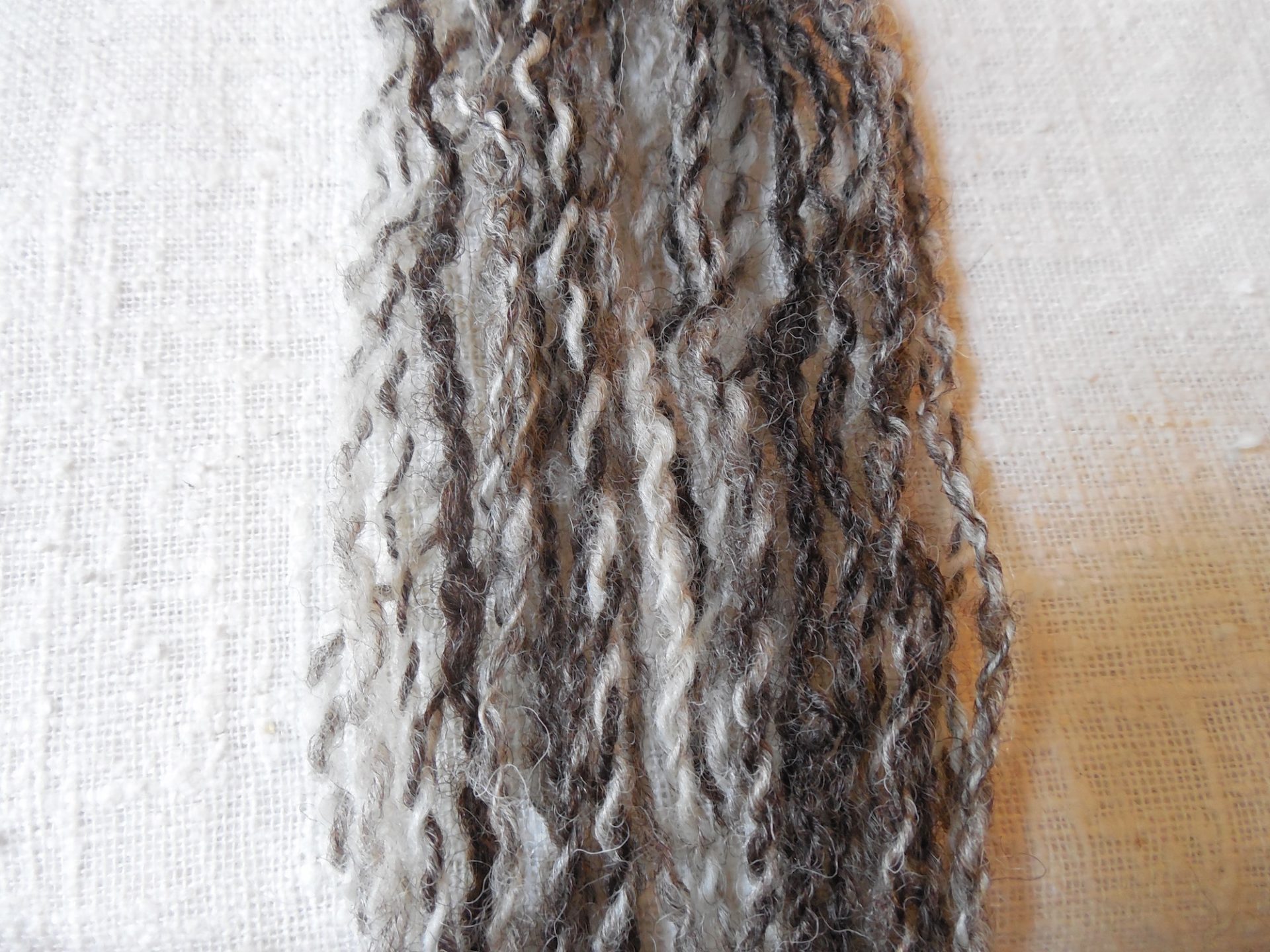
My first mistake was only spinning one little kind of sample. Making a judgement from that, is just not fair. I should know better and I usually do. Normally I sample spin several methods, pull them off the wheel and study them to see which one works best. I have now spun two more samples that are larger in order to get a better understanding. I can still say, this is a Medium wool. In fact, I can’t say that enough.
Flicking: it was deceptive. It looked as though it would flick easily. It was actually quite difficult to get through each lock. No, there was no matting at all. I experimented with two types of flickers and ended up using both throughout. Some of the locks needed a good whacking to loosen up the wool (again, even though it was not matted or felted). The fibers just held together on both the butt and the tip ends. Especially the tip end though. Even the little amount of VM wanted to stick to the fiber. All of my flicking sessions ended with soar and fatigued wrists and fingers.
Carding: this was a breeze. It went easily and smoothly through the drum carder. I have to say, the batts were quite lovely. I did one solid brown and one mixed color. I only put them through once so the multi-colored was purposely blocky.
Spinning: a nice experience. Spinning was pretty effortless. The wool was easy to manage. I spun one in a backwards draft with a sometimes long draw style just to see. The multi-colored batt was spun short forward. Both methods of spinning worked just fine, drafted consistently. Not too slippery and not too grabby. It was soft, but not too soft, had a sturdy handle with just enough grip.
As far as having similar characteristic to a down breed, well, maybe ever so slightly when spun from hand carded rolags, which was my first sample spin. After having just worked a Suffolk fleece, I’d have to say, “eh, not really super down-like”. Downs have sturdy hefty loft. This Jacob’s loft was a bit mushy. But Hey! That’s not to say something bad. Jacob loft is more delicate which can make for some very nice easy moving draping fabric. Also I’d be curious to try a slightly more mature sheep fleece to see if I’d get the same results. Remember, this is a yearling fleece.
The resulting yarn from any of these spins – worsted, semi-woolen, woolen – would work well for all different kinds of projects and garments.
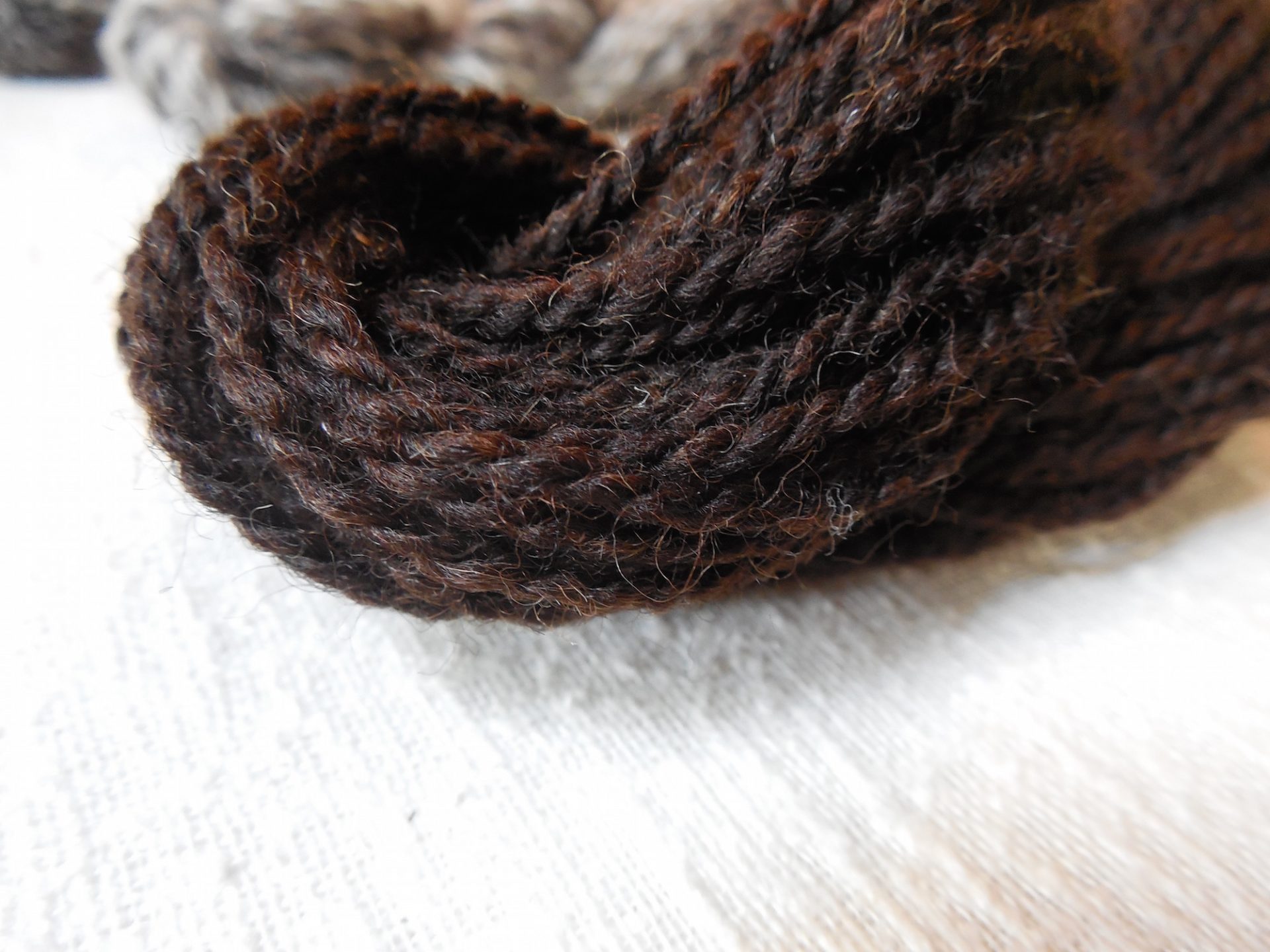
The upside: The dark brown is a rich color that in so very pretty. That dark contrasted with the white really creates a nice pop of color on the multi-colored yarn. You could really get a good variety of color blends with a Jacob fleece. The soft but sturdy nature and medium/low elasticity really makes this yarn very versatile. I am happy with the resulting yarns. My favorite from this fleece is the semi-woolen. Just enough squish to be ultra cozy.
The downside: Obviously, the joint fatigue I experience was a big downer. The VM was hard to get out which means 1) I had to pick at it after flicking, basically it turned into a whole extra step in the processing, 2) it takes a lot longer to get to the fun part of spinning it.
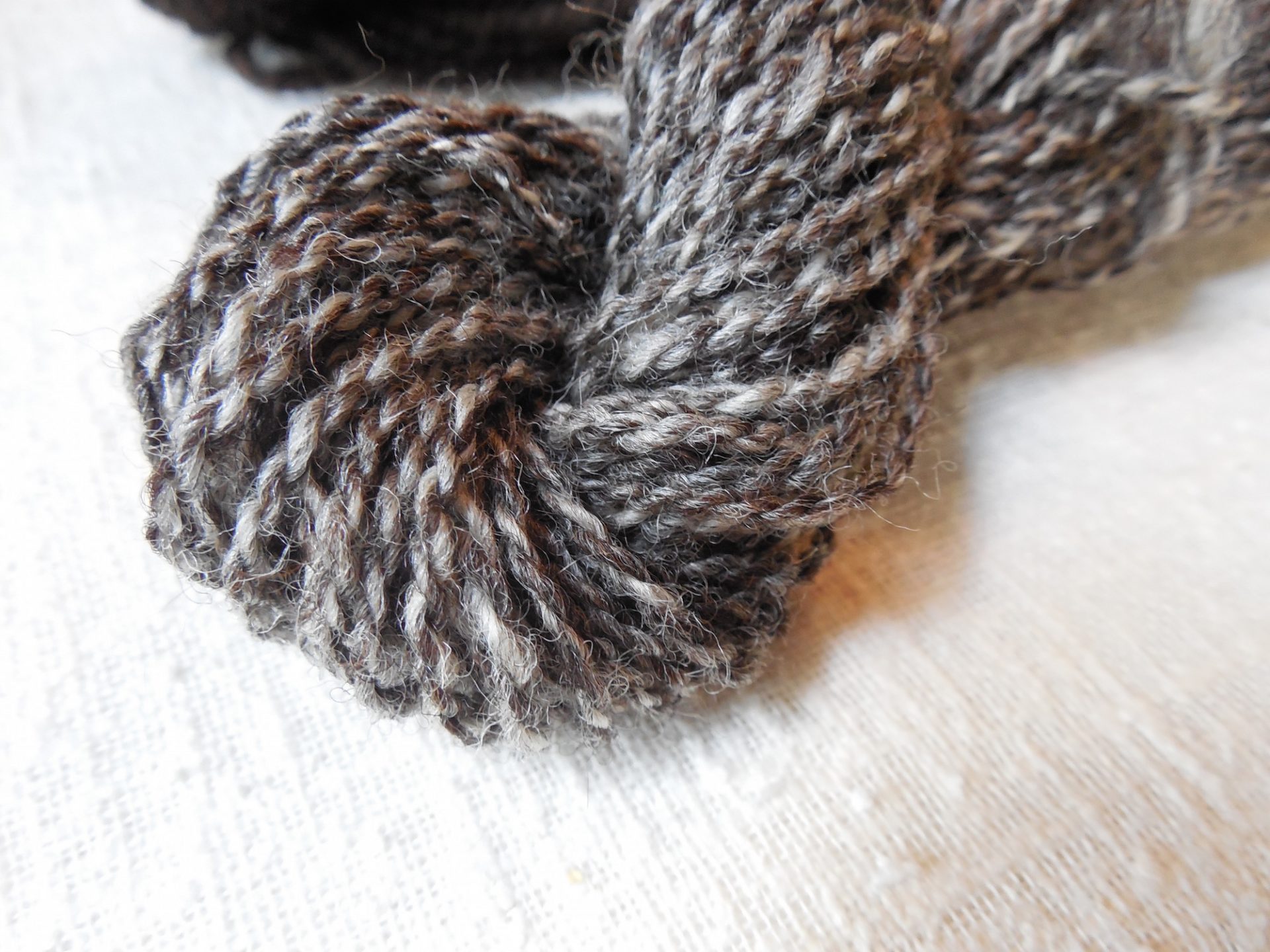
My wow moment did not come until the very very end. After I spun up both of the last samples, took a good look, I finally realized how pretty and functional Jacob yarn is. So often there is an “ah, I love X about this wool” moment early on. When that didn’t happen, I think I unconsciously moved on to my next fleece. Which, by the way, I had just washed. I believe my excitement for the next fleece played a part in my lack of enthusiasm for Jacob. Chalk it up to bad timing. While it’s still not at the top of my list, I like and have a great respect for Jacob. I have come to appreciate the qualities of this wool. It is a nice spin, nothing to technical or annoying about it. The final yarns are quite beautiful.
Have you ever come across a fleece that is captivating? It pleases your wool senses. It inspires possibilities. It begs to be handled. You love it so much that, after washing, you diligently check on it every hour or so to see if it’s dry yet. Deep inside you know it’s really just an excuse to gaze upon it’s loveliness just a few more minutes. The hand, the crimp, the color… the everything…too wonderful for words.
So, Jacob… um…well.. Jacob didn’t do that for me. Don’t get me wrong, it’s great. It’s a good breed with good sturdy wool. It just didn’t thrill me like I thought it would. High expectations (and lack of doing my homework) is so often a downfall. I got this nice fleece from a farm in New York. It is a yearling fleece! The staple length is 4 to 5 inches which falls right into the expected 3″ to 7″ range. It washed up nicely with 3 washes and 3 rinses. It has a nice balance of dark and light colored wool being a piebald (white with dark spots).
Jacob’s have medium soft wool. This one is, for the most part, pretty soft, which you would expect from a yearling. After washing, I dug into a section to start getting a feel for the wool, it was riddled with kemp. Ugh, I was confused and a little worried. Visions of limited-use skeins flashed before my eyes. Oh dear!
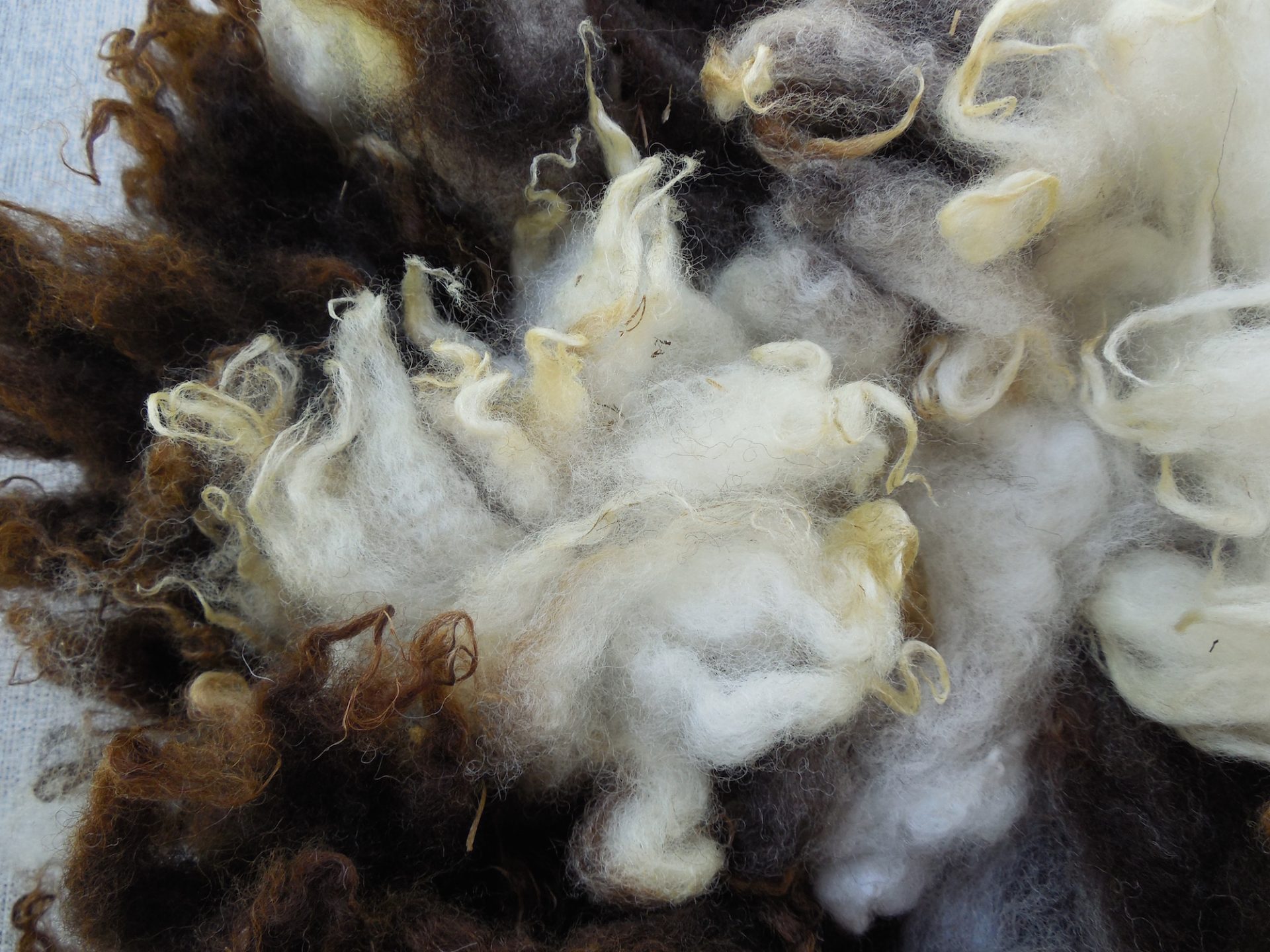
Further investigation revealed it was just that one little area with kemp. Oh, thank goodness! Regarding kemp, I have since read two different things. One, it’s common for Jacobs to have kemp. Two, another source said there should be little to no kemp. Huh. The length is more than great on this fleece. It ranges from 4″ all the way up to 6″ with the bulk of it in the 5″ range. Another common acceptable Jacob trait is varying lengths of wool on each sheep. Often the darker wool is shorter. Jacob fleece is also know to have a nice open structure and light in the lanolin department. It has a down-like quality even thought it is not double coated. It fluffs up with lots of spring when spun. The micron range for the breed is 26-36.
Oh, I almost forgot, one of the main characteristics is the horns. Jacob are polycerates. They have 2 to 6 horns.
A brief history: These charming small framed sheep come from England where they have been very popular for centuries. Beyond the most recent centuries, it is unclear of the original original decent. Some think maybe the area of Syria. Today there are British Jacobs and American Jacobs. Jacobs were imported to the US during the mid 1900’s.
The British decided to breed Jacobs for an even fleece and larger overall body structure. Jacobs in the US have been breed to enhance the quality of wool but leaving other original characteristics the same.
Jacobs are a Heritage or primitive breed. In the United States, they have been put on The Livestock Conservancy conservation list, currently at a “Threatened” status.
Small batches of washed locks and flicked locks are available in my Etsy shop as of the publishing of this blog entry.
